Razor clam surveys - Firth of Clyde and Solway: report
This report describes a survey carried out in the Firth of Clyde (2023) and Solway (2024) to estimate the densities and sizes of razor clam, Ensis siliqua. The surveys were conducted as part of the Scottish Government’s electrofishing scientific trial.
Appendix I - Report figures.
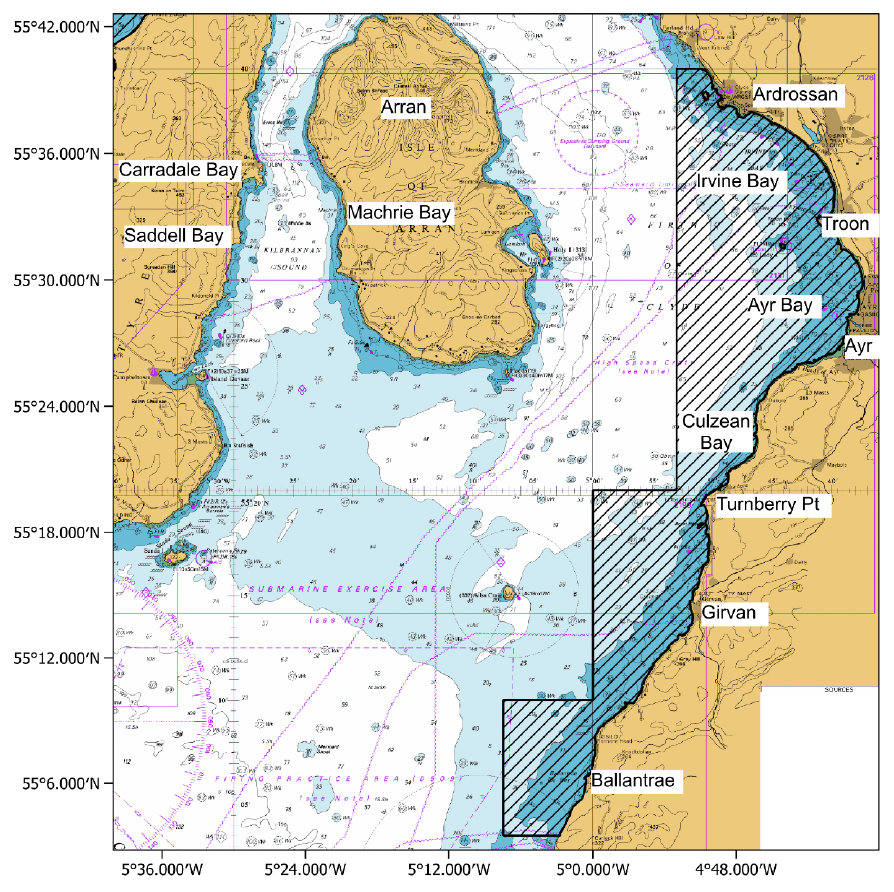
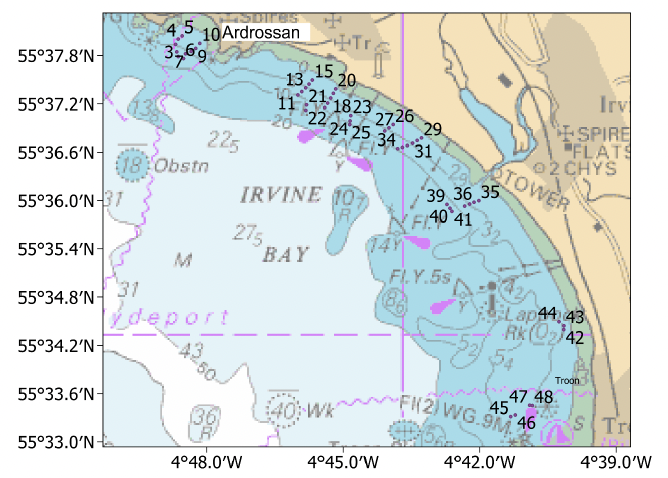
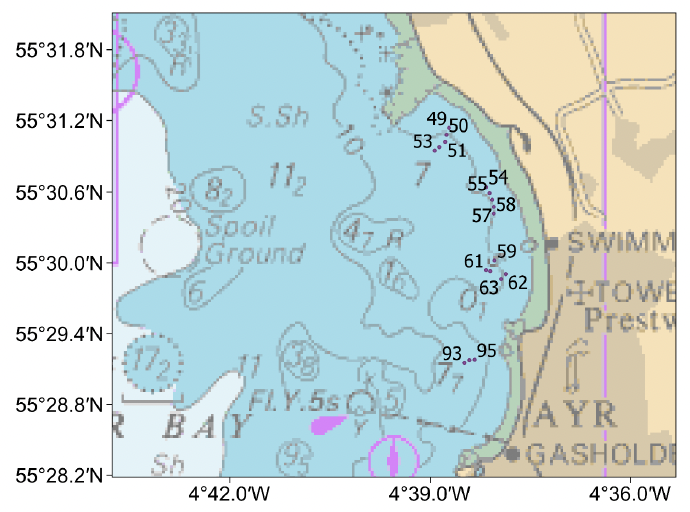
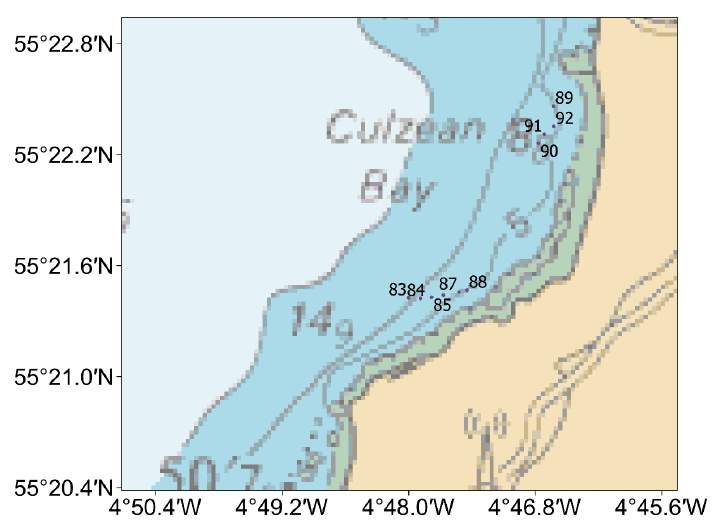
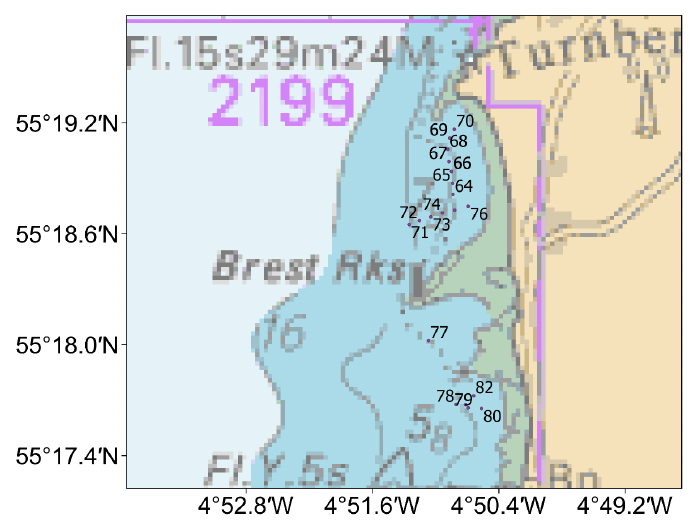
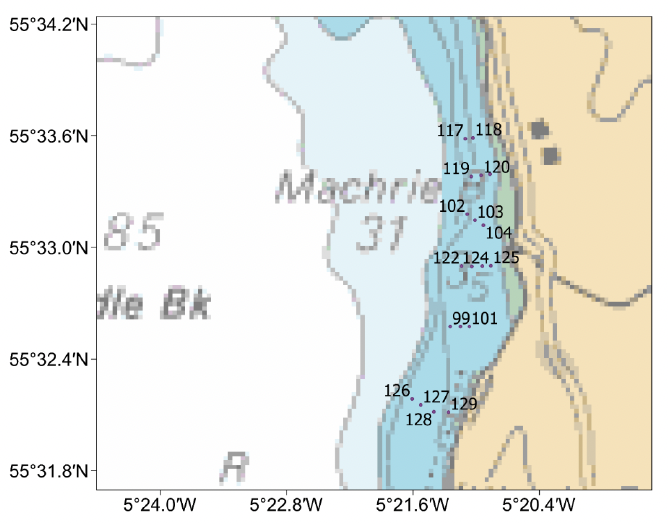
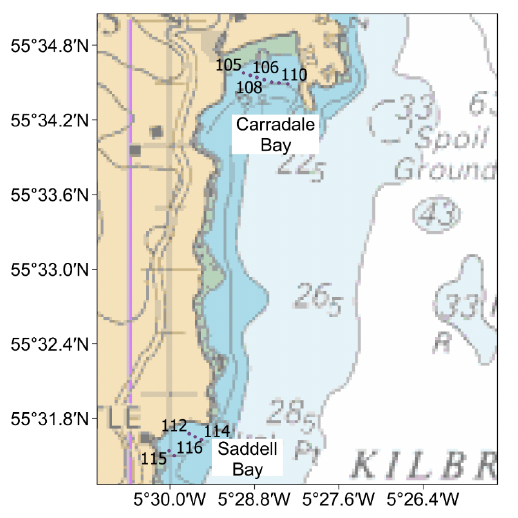
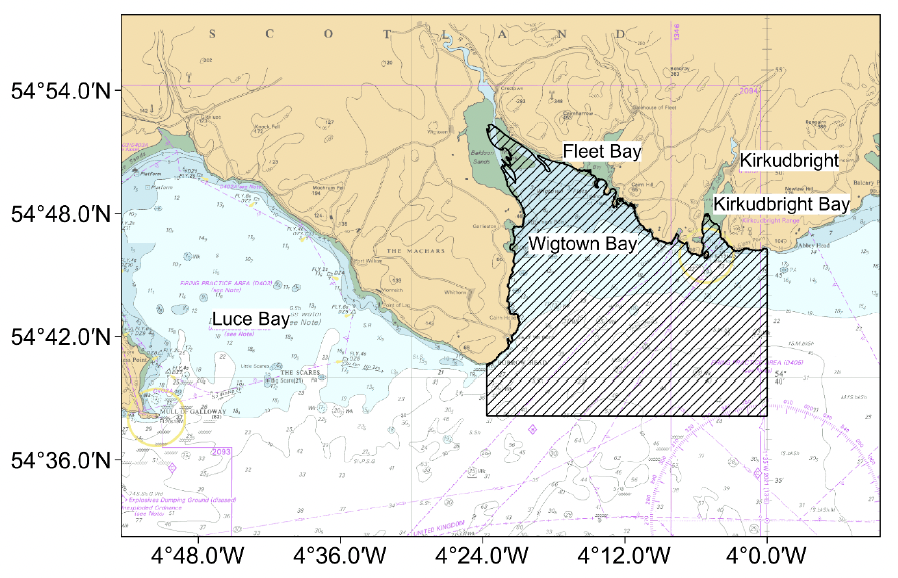
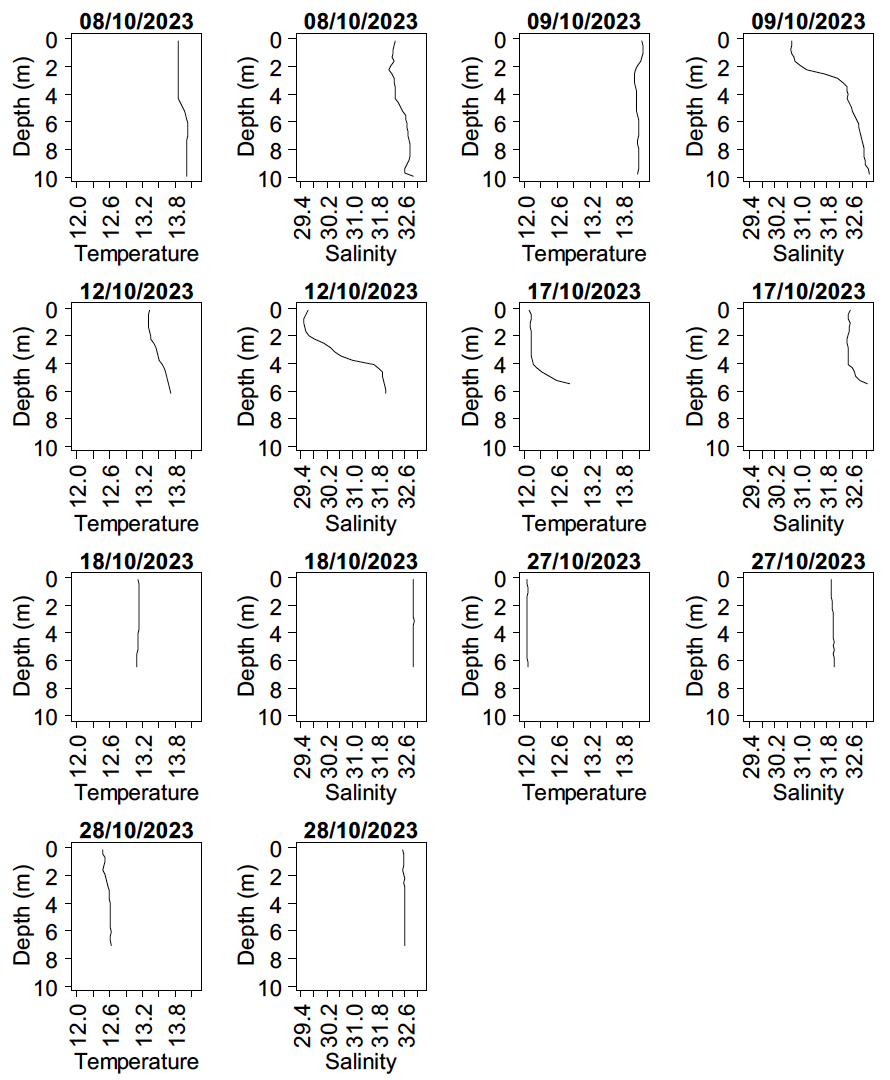
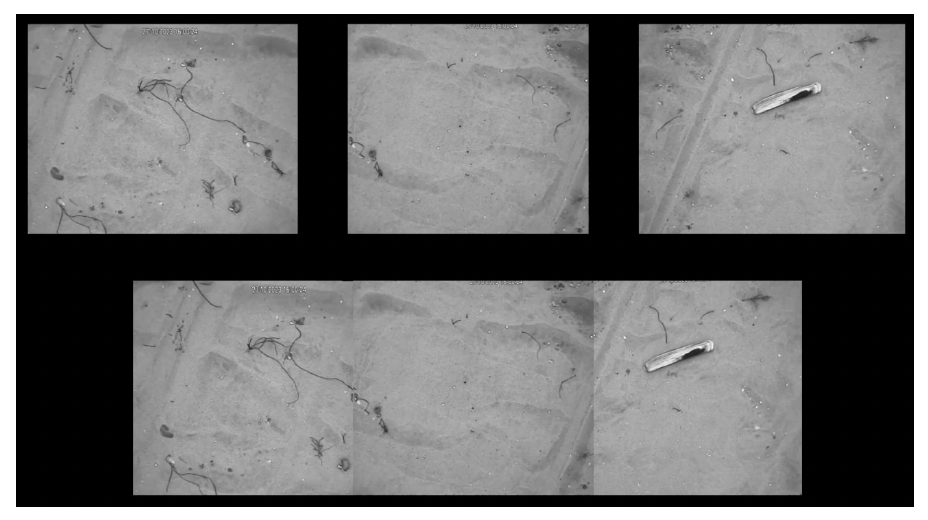
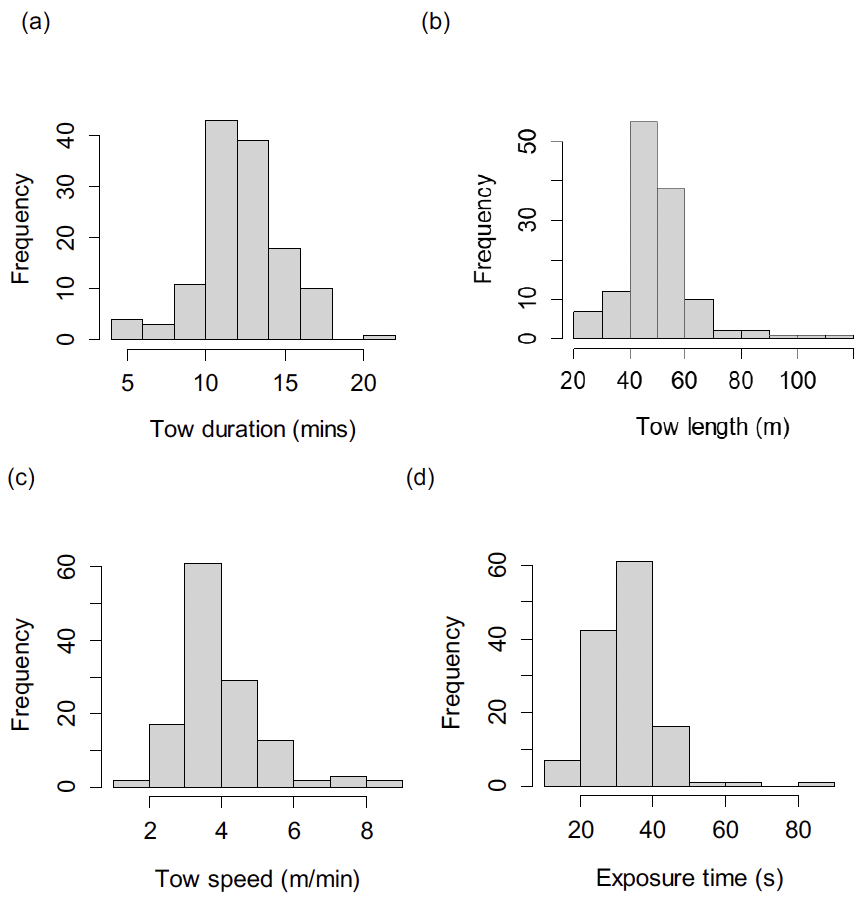
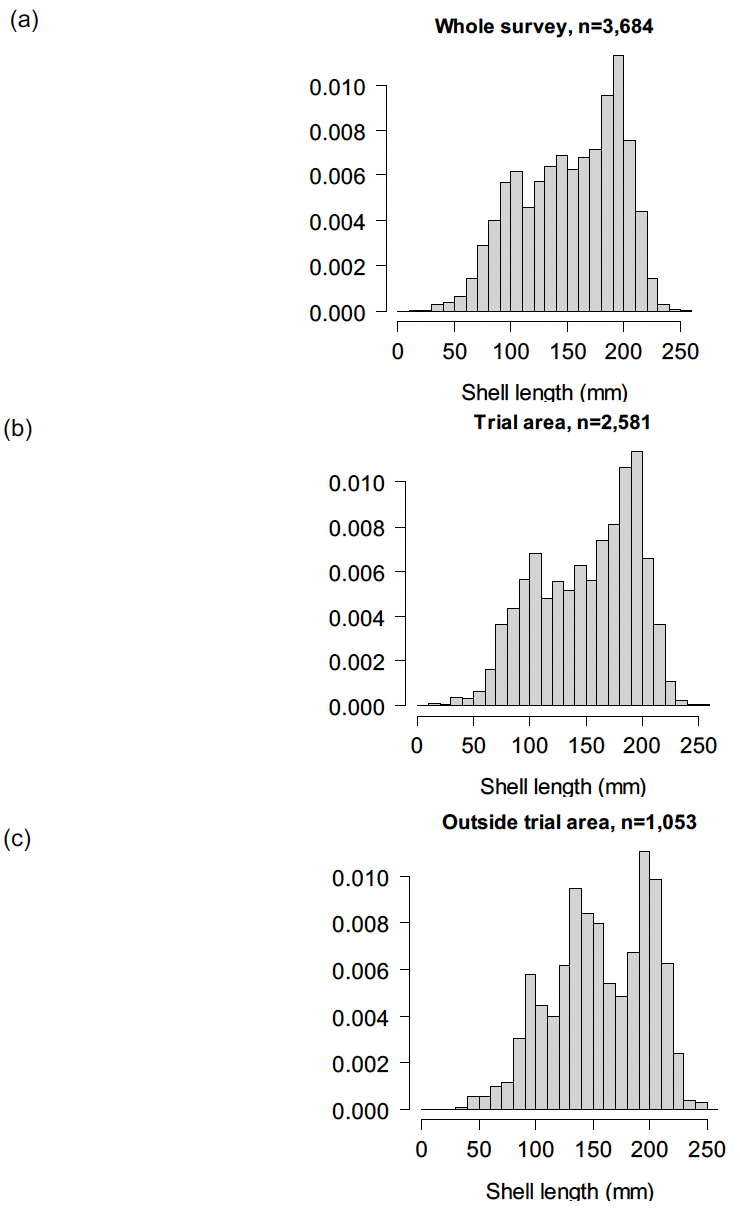
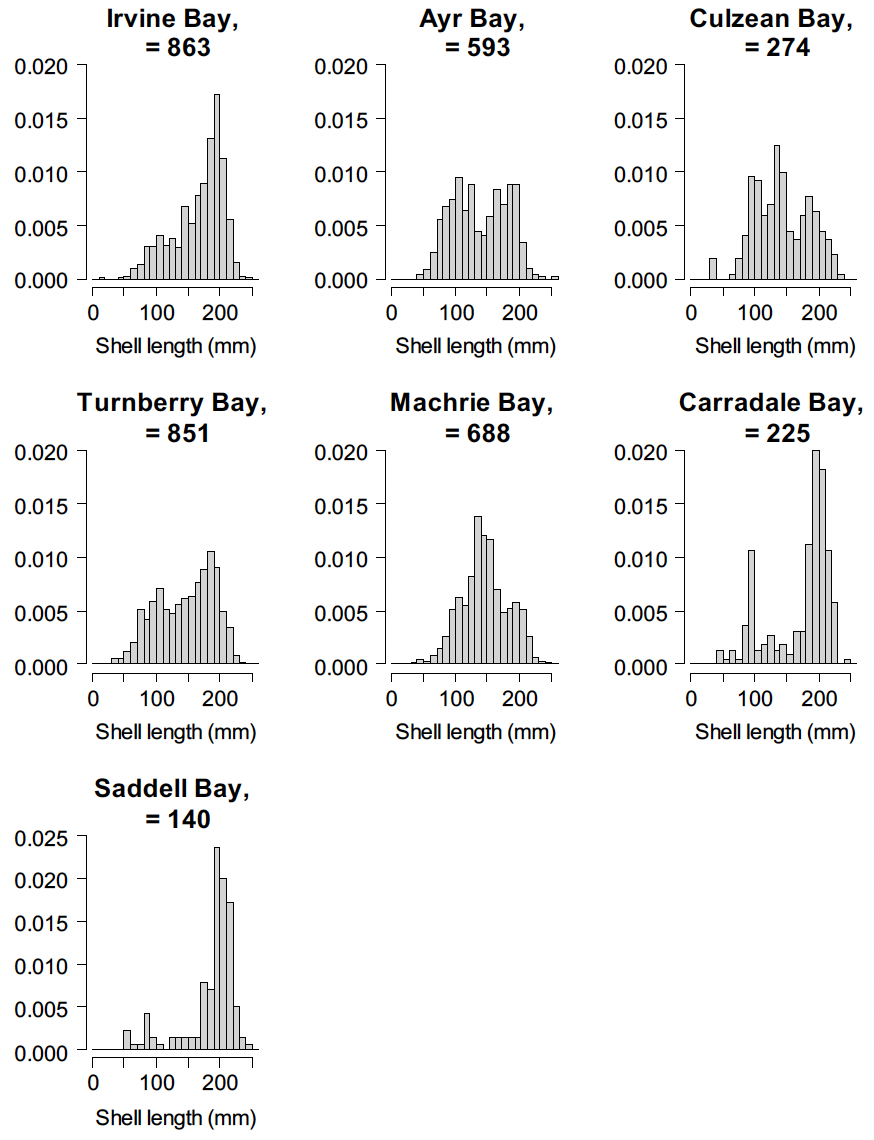
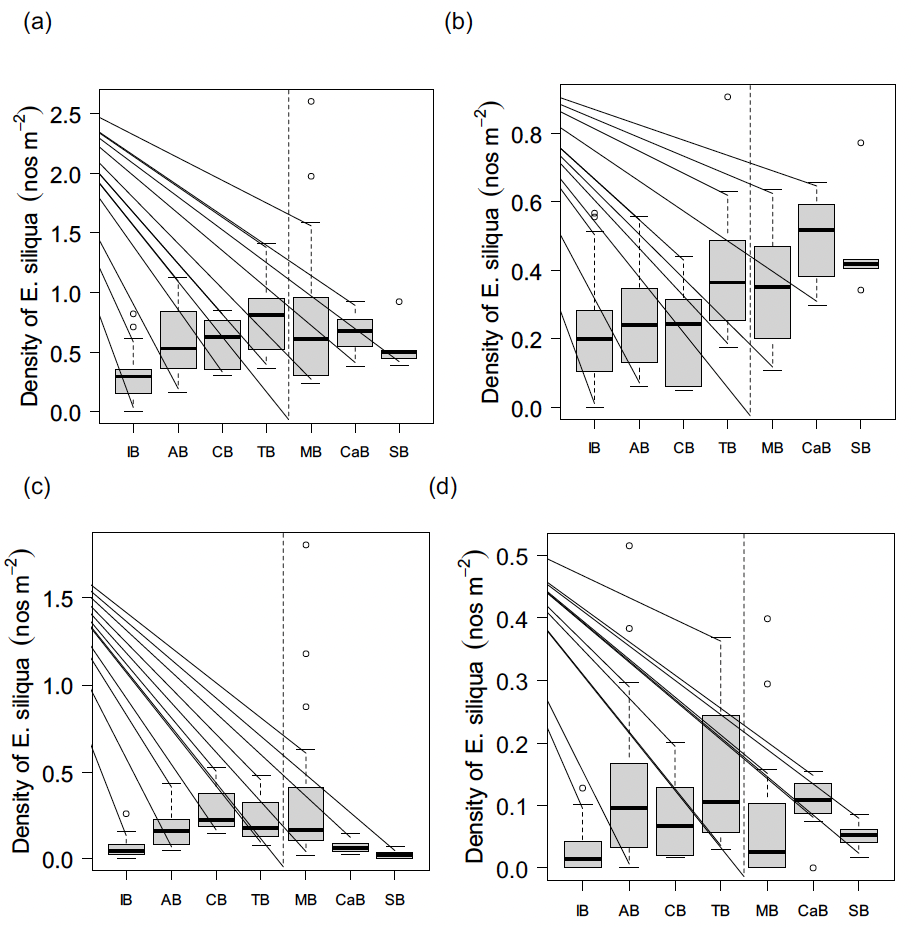
IB = Irvine Bay, AB = Ayr Bay, CB = Culzean Bay, TB = Turnberry Bay, MB = Machrie Bay, CaB = Carradale Bay, SB = Saddell Bay. Vertical dashed line separates sites within the scientific trial from sites outside the permitted fishing area. Heavy horizontal lines indicate the medians, the boxes the interquartile ranges, whiskers show the quartiles +/- 1.5 times the interquartile range, circles indicate outliers: (a) All sizes of E. siliqua; (b) Large E. siliqua ≥ 150 mm shell length; (c) Medium E. siliqua ≥100 mm and < 150 mm; (d) Small E. siliqua < 100 mm shell length.
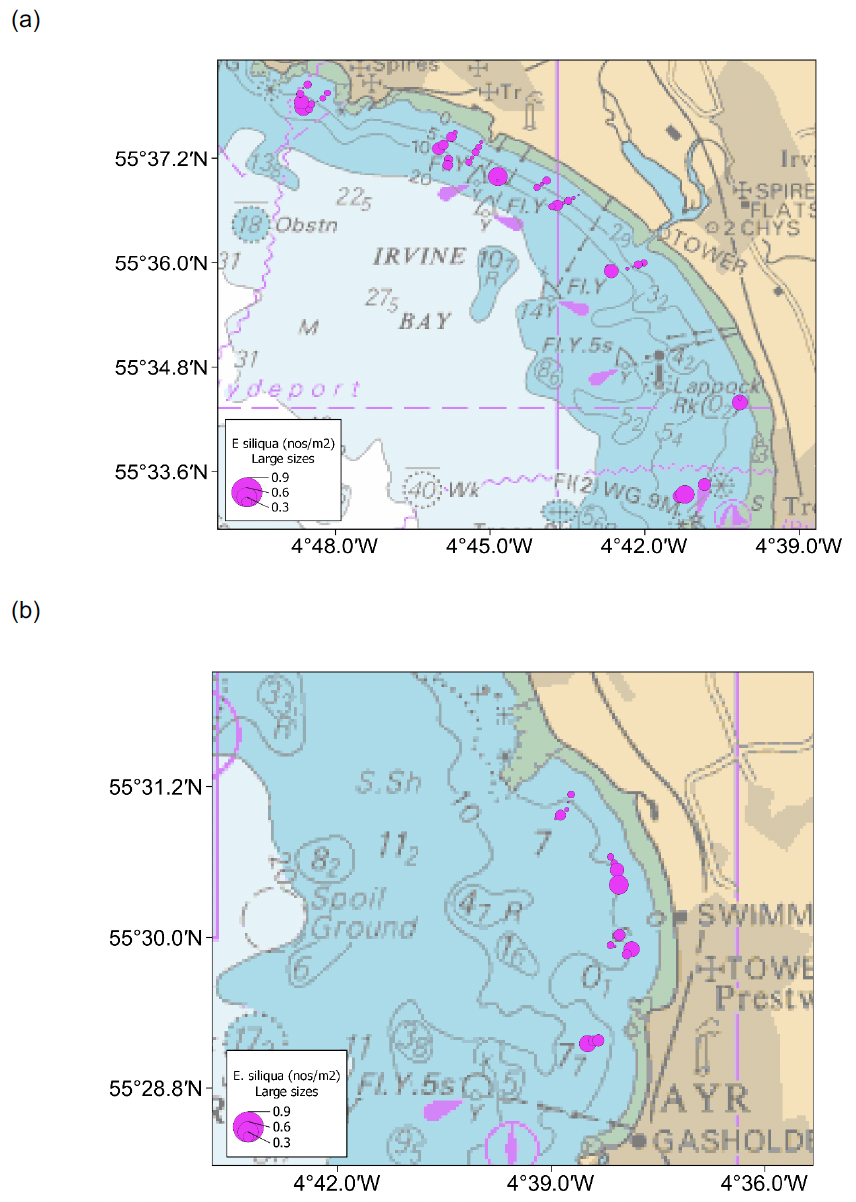
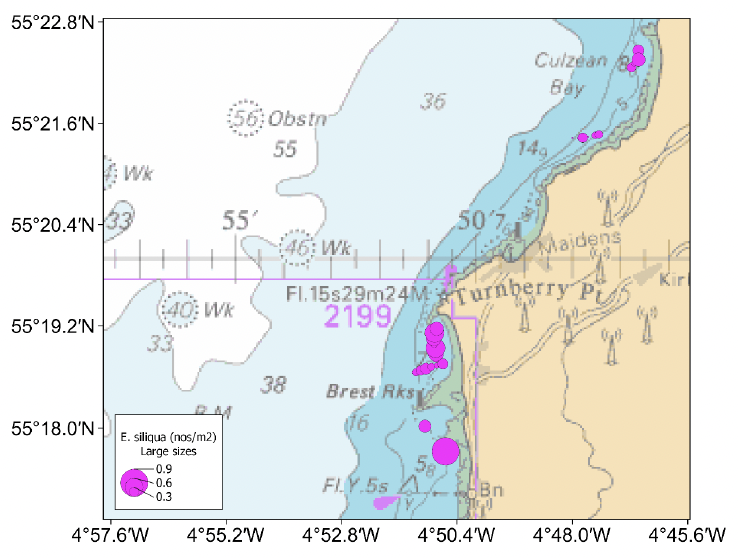
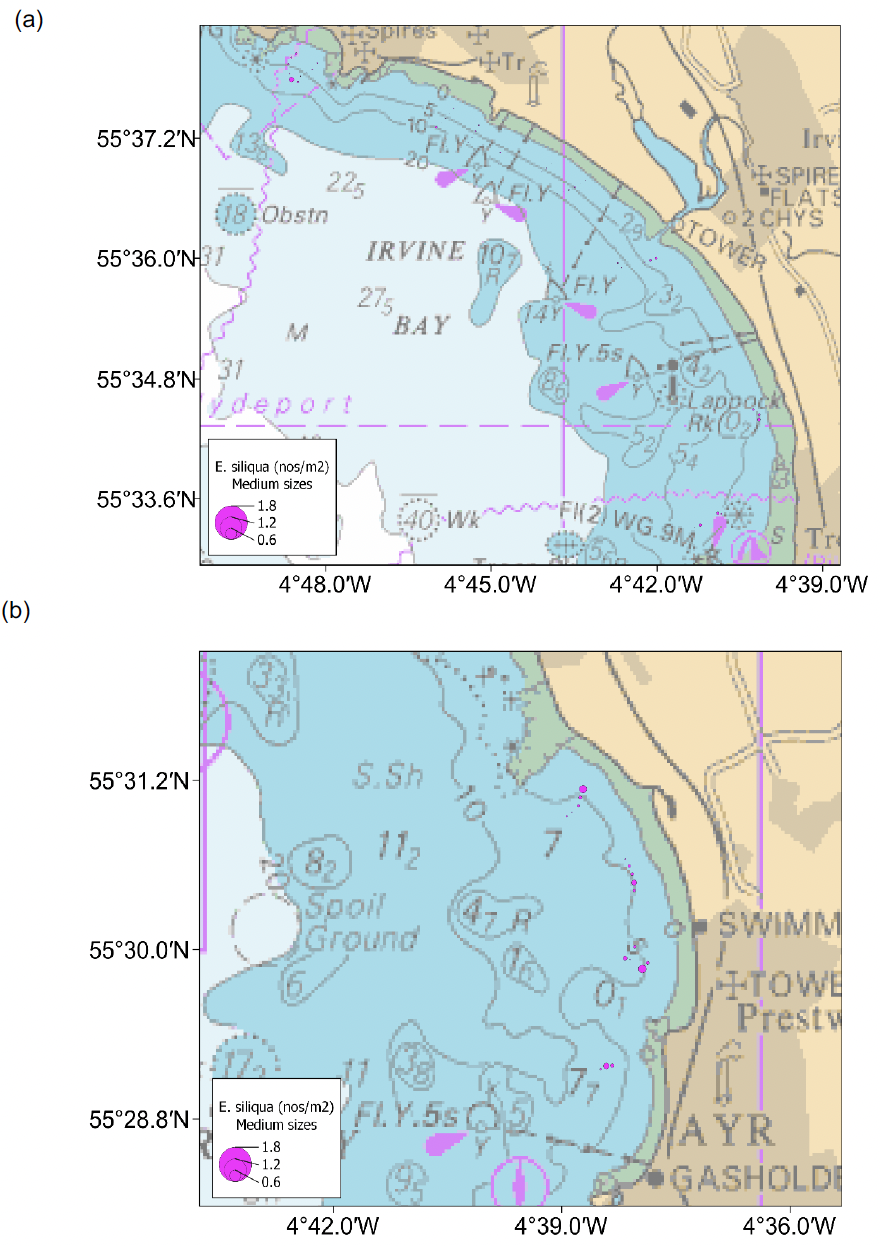
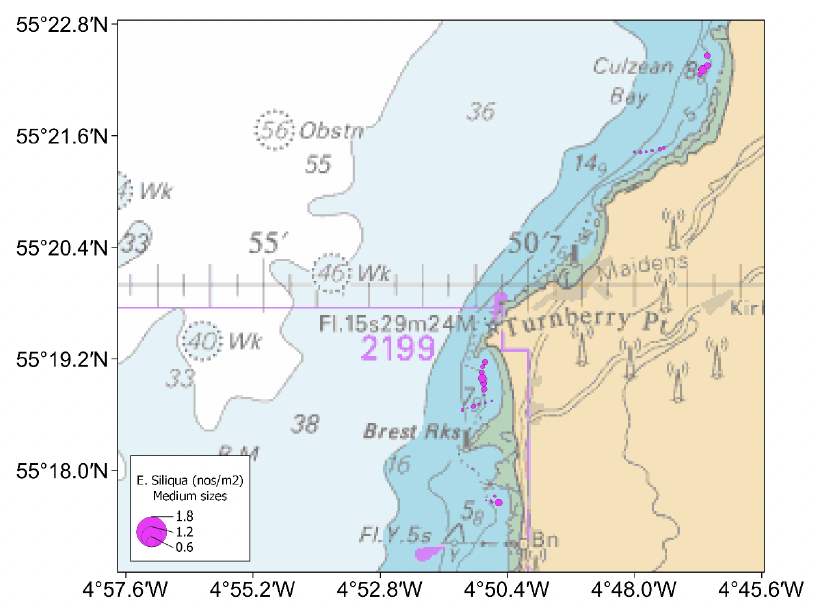
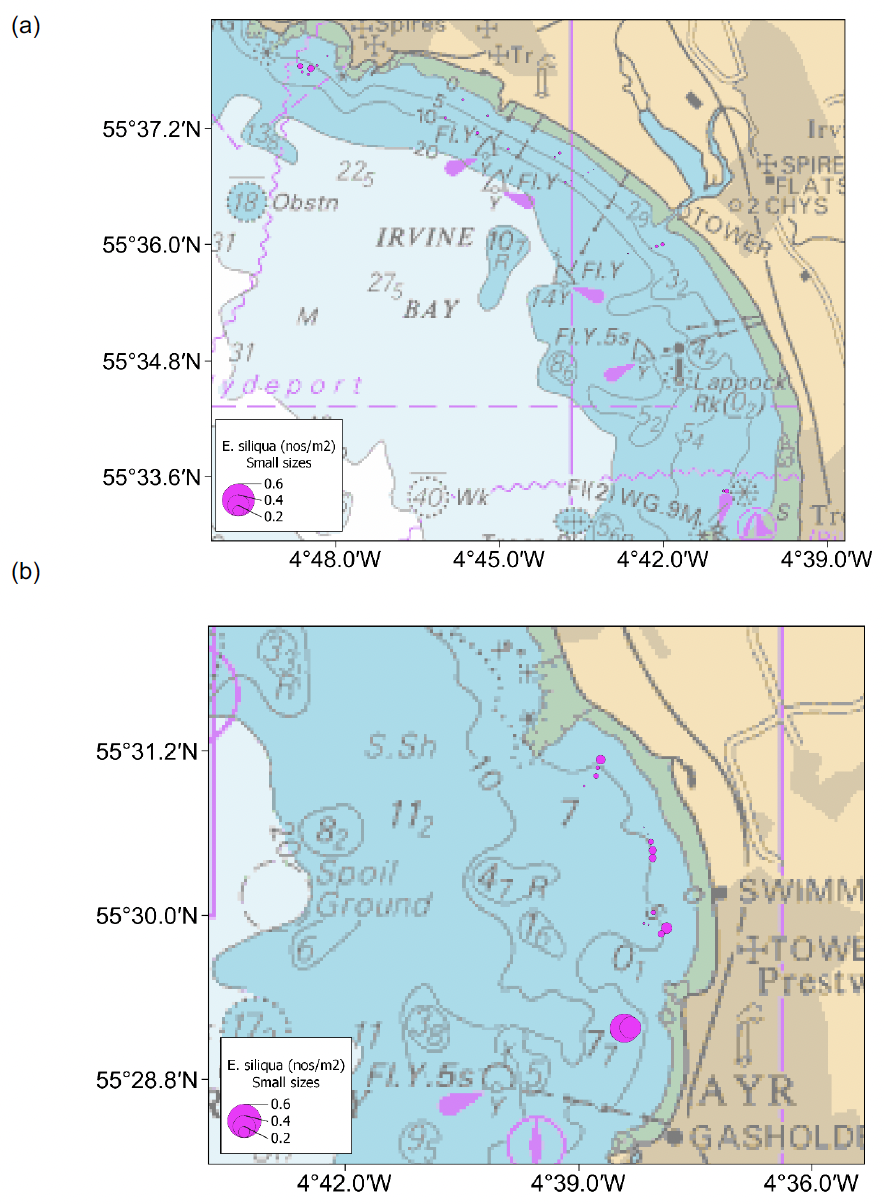
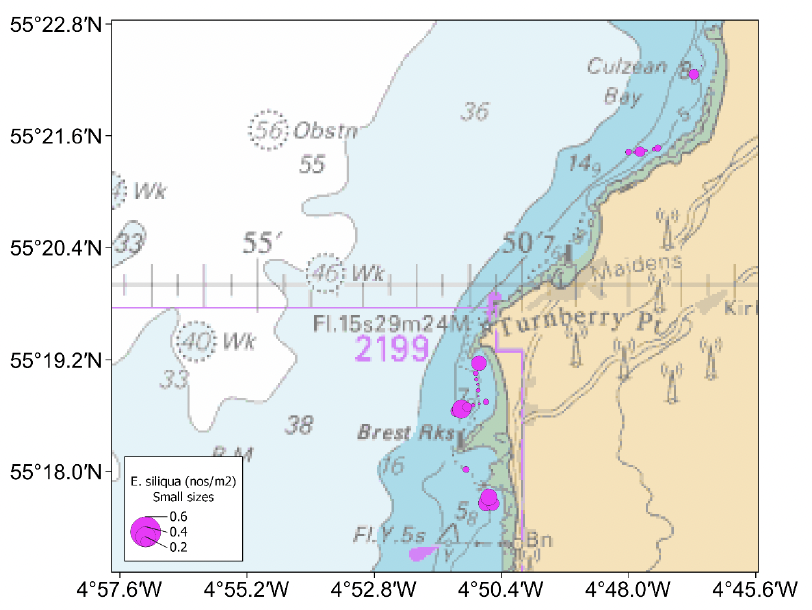
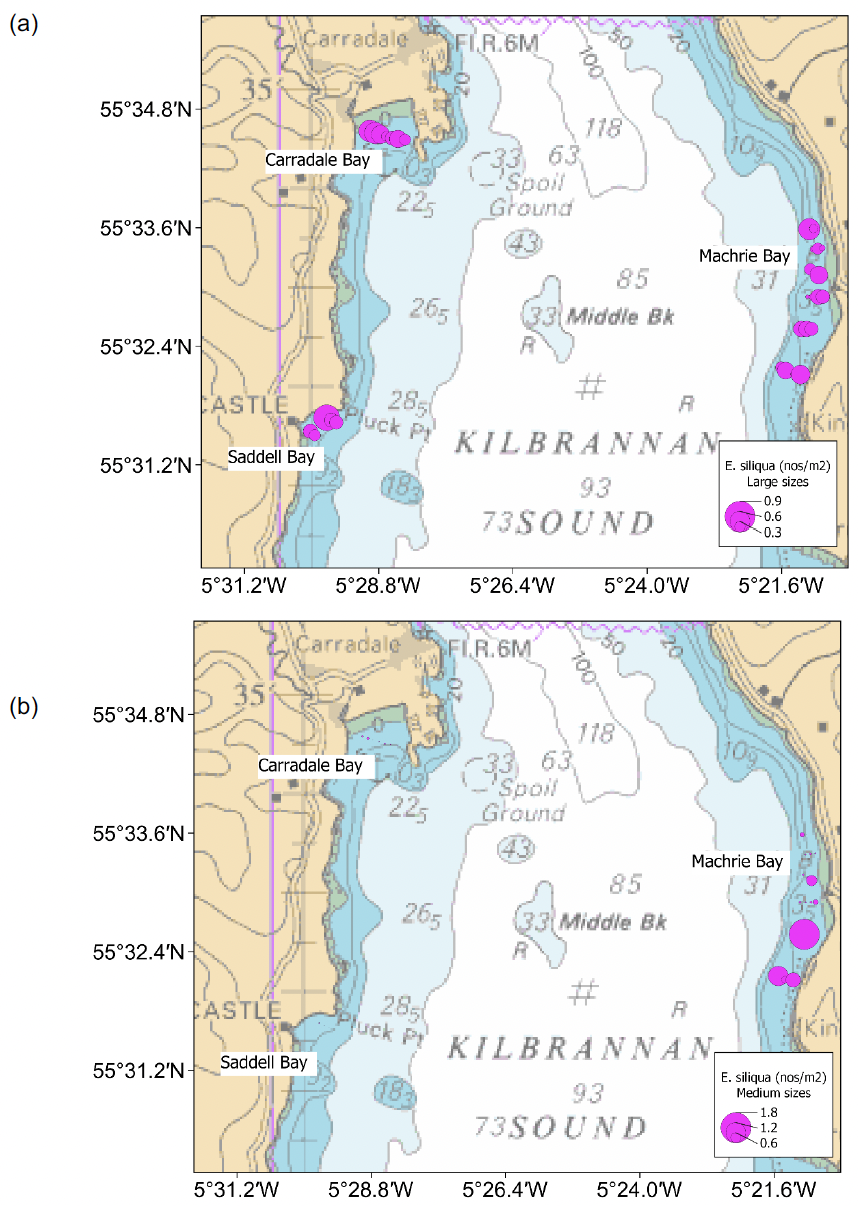
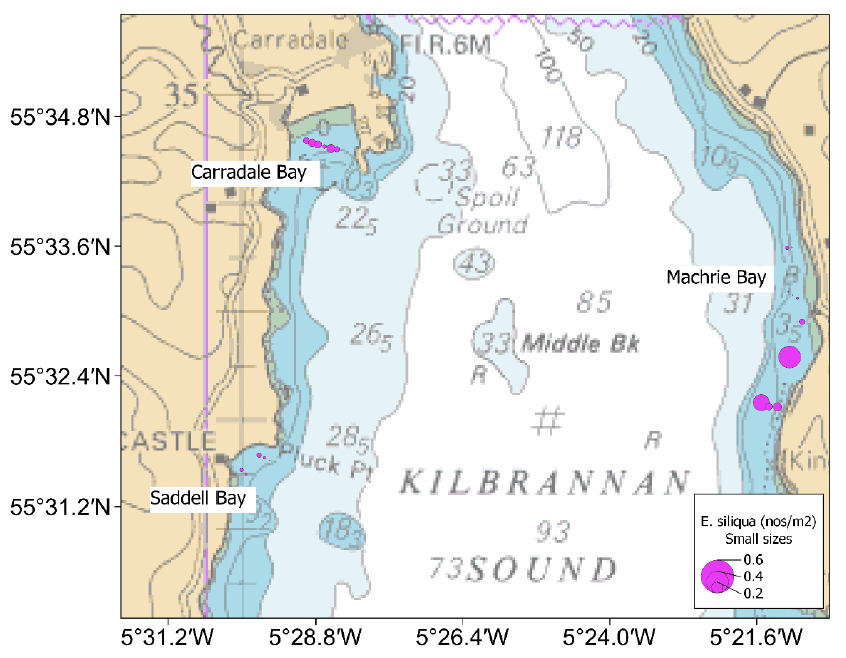
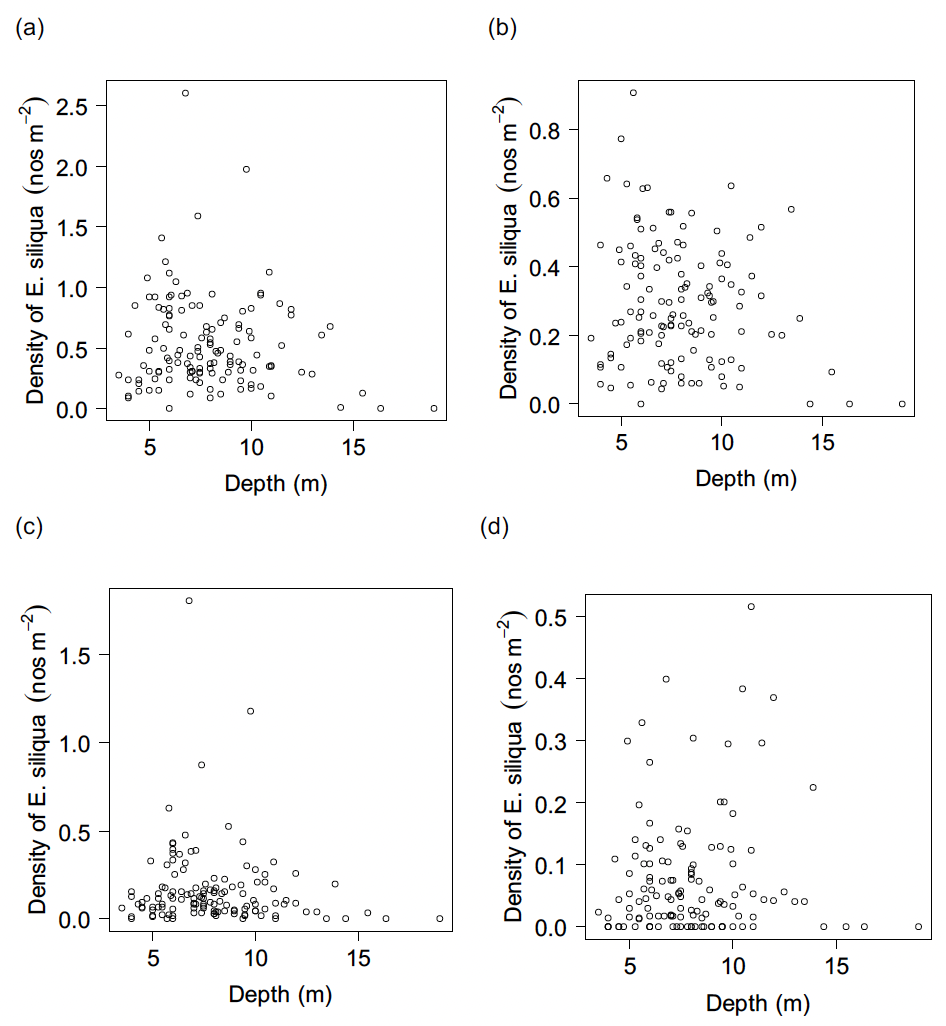
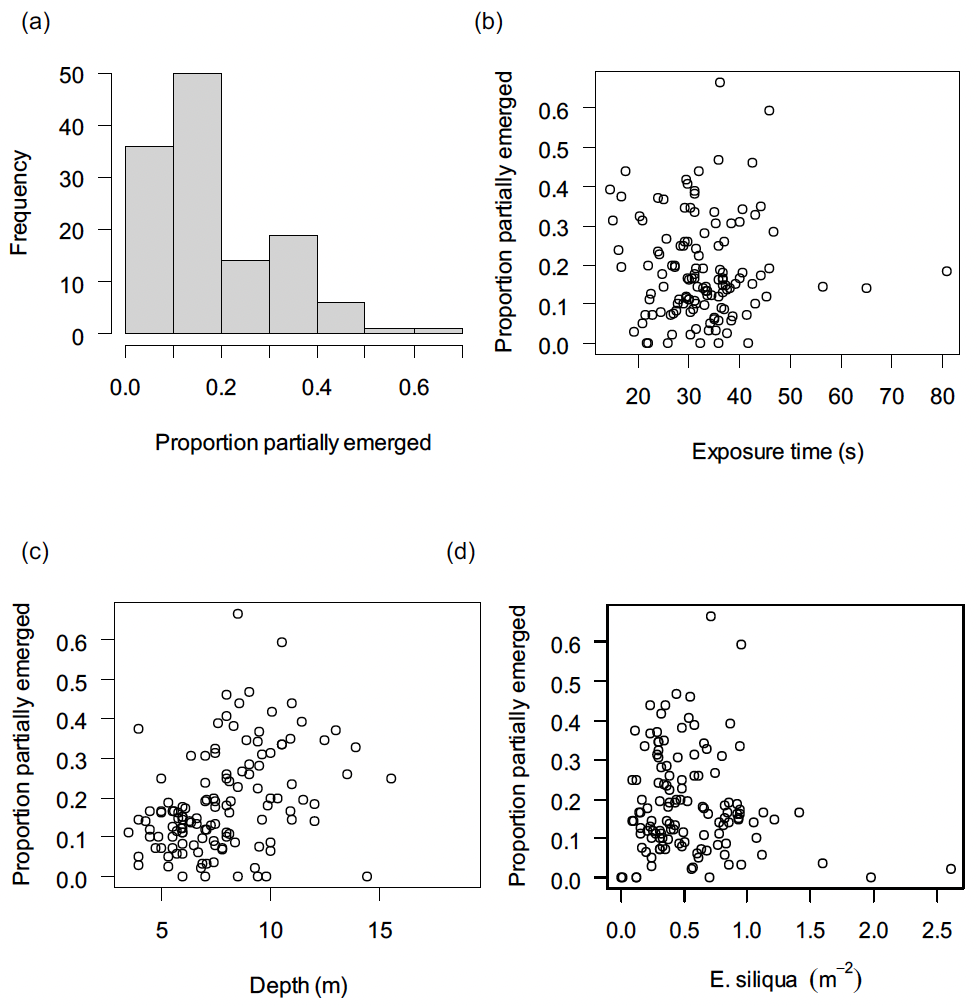
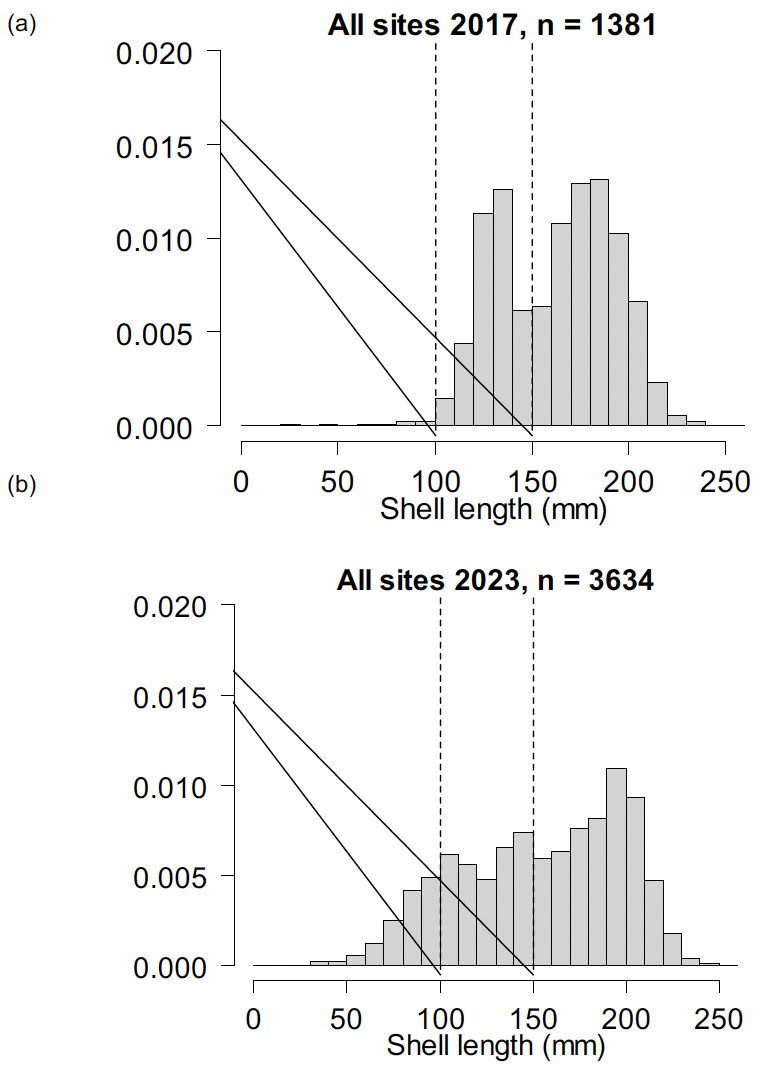
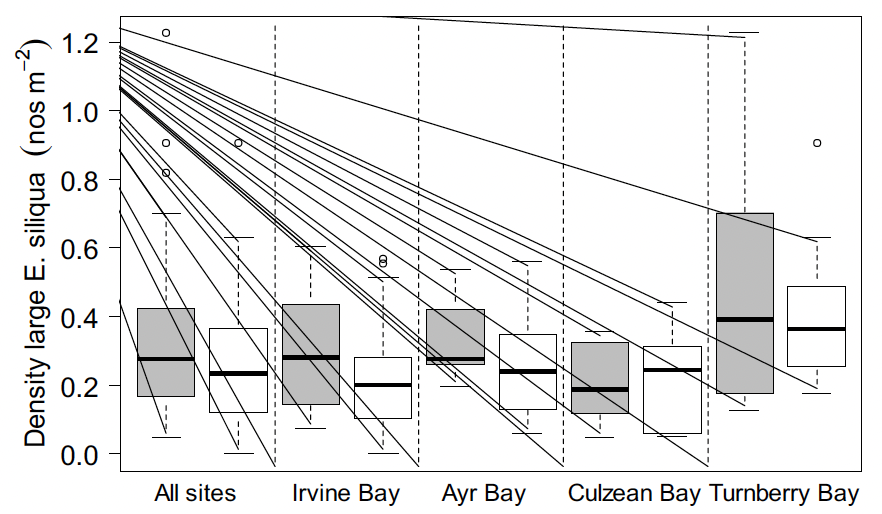
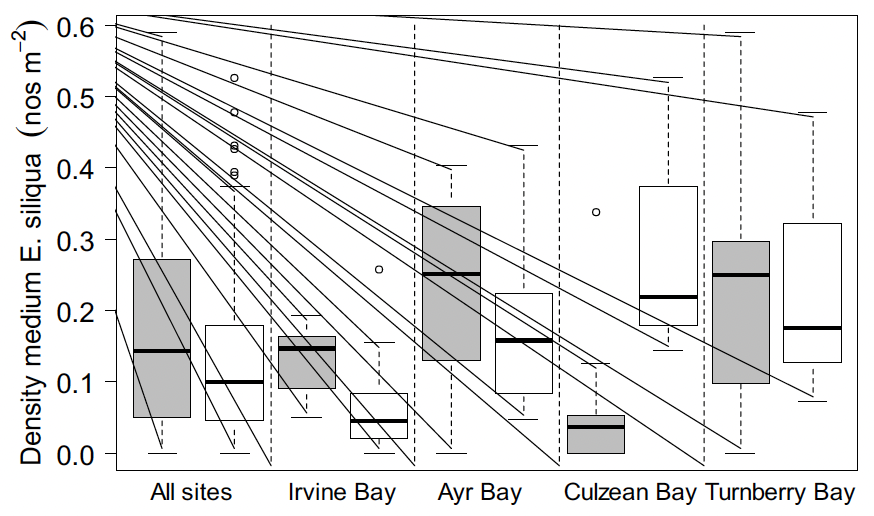
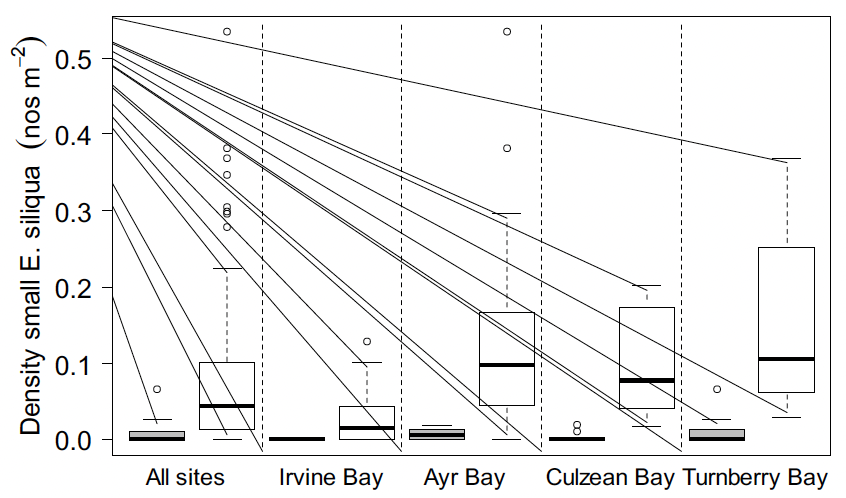
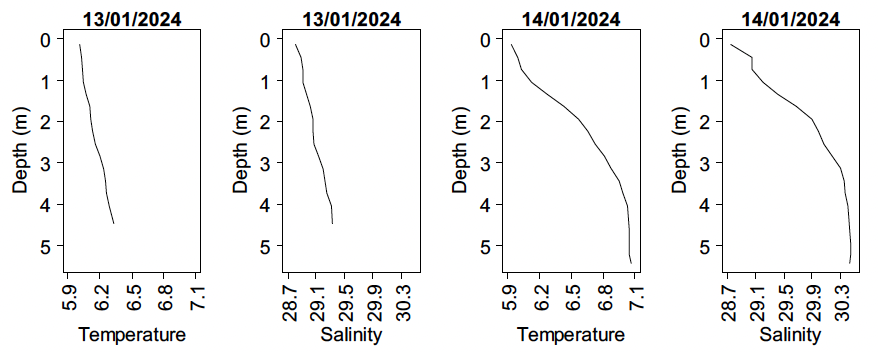
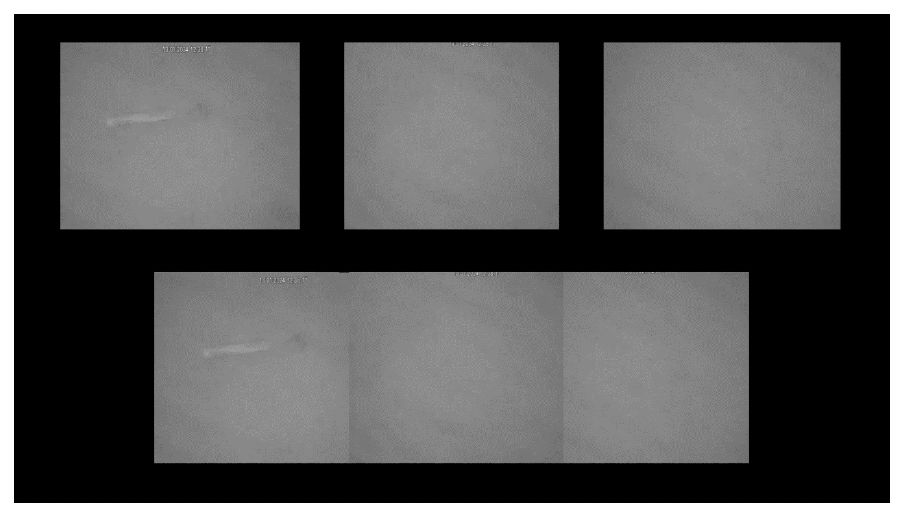
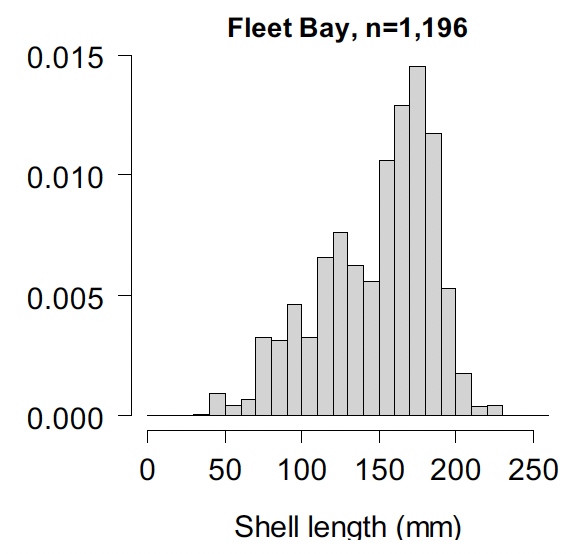
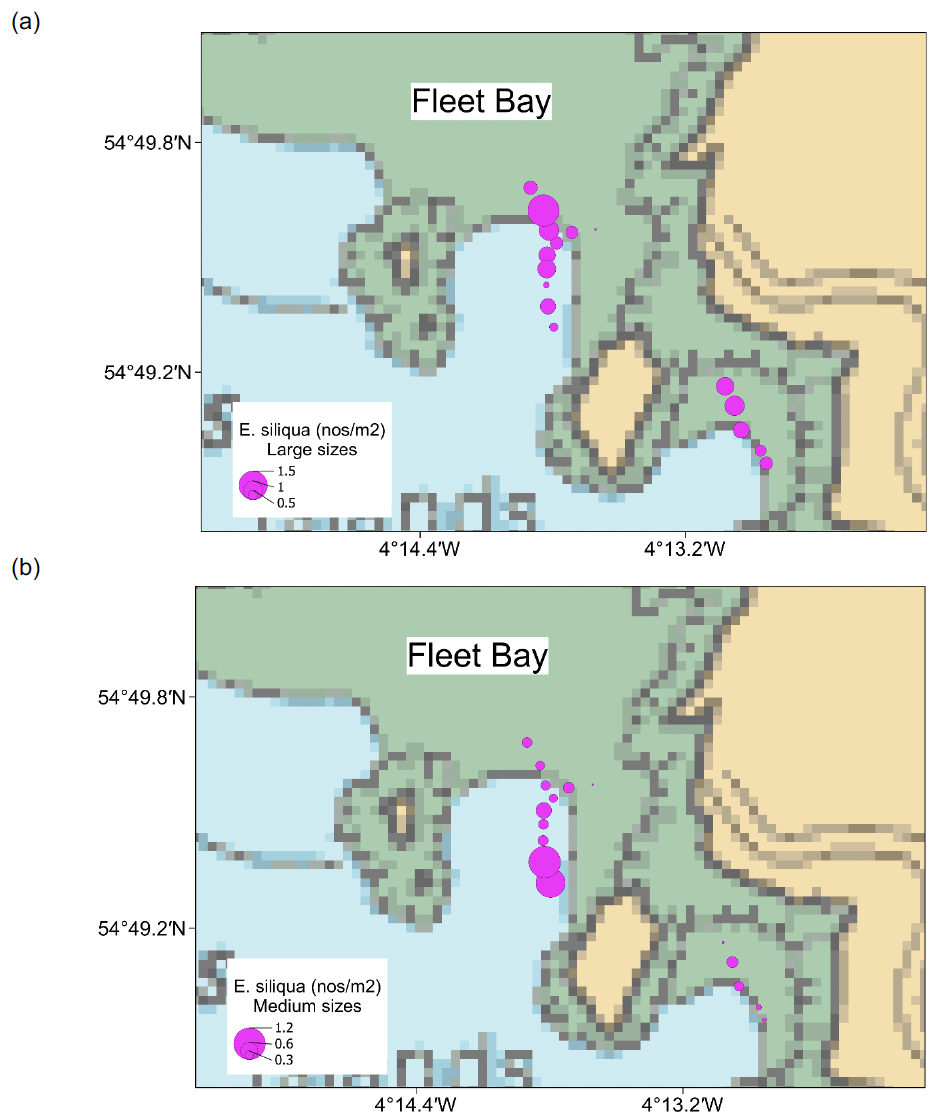

Contact
There is a problem
Thanks for your feedback